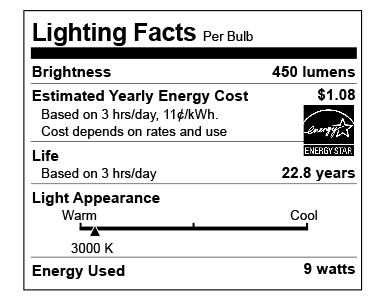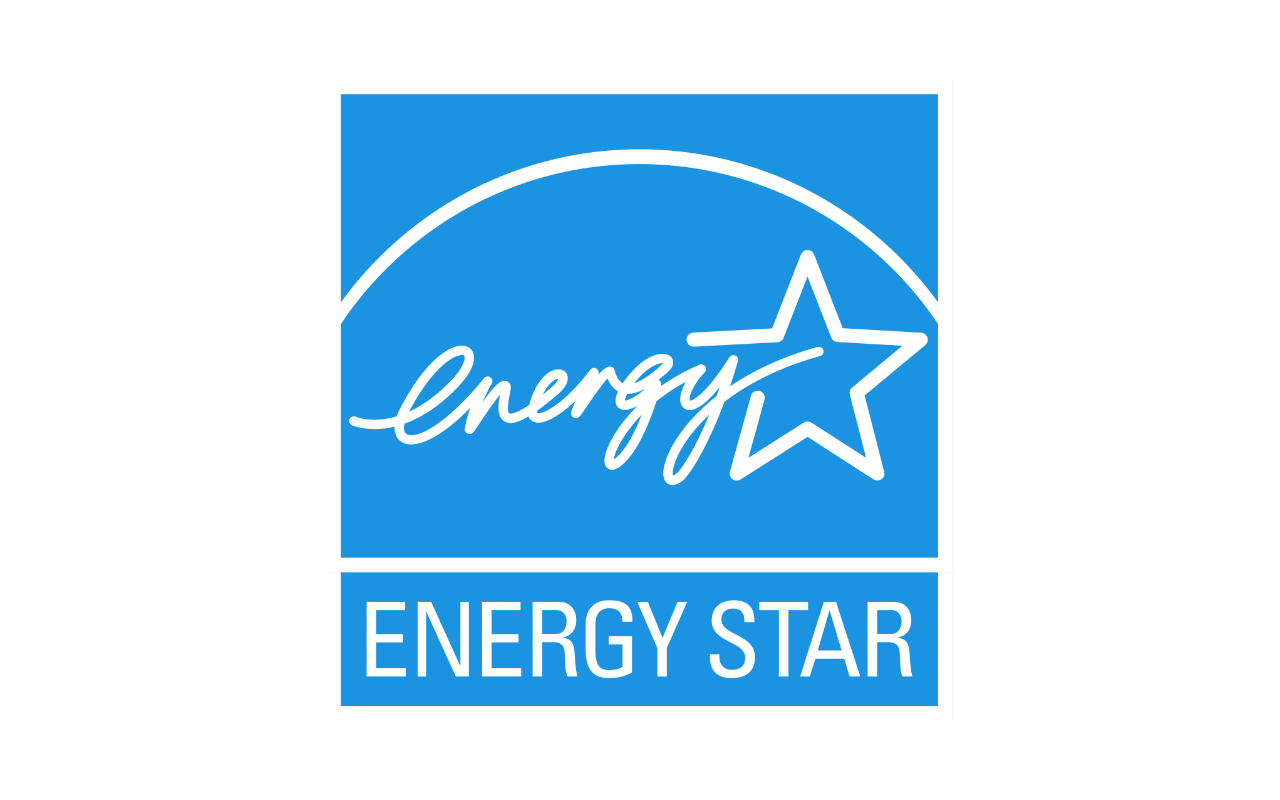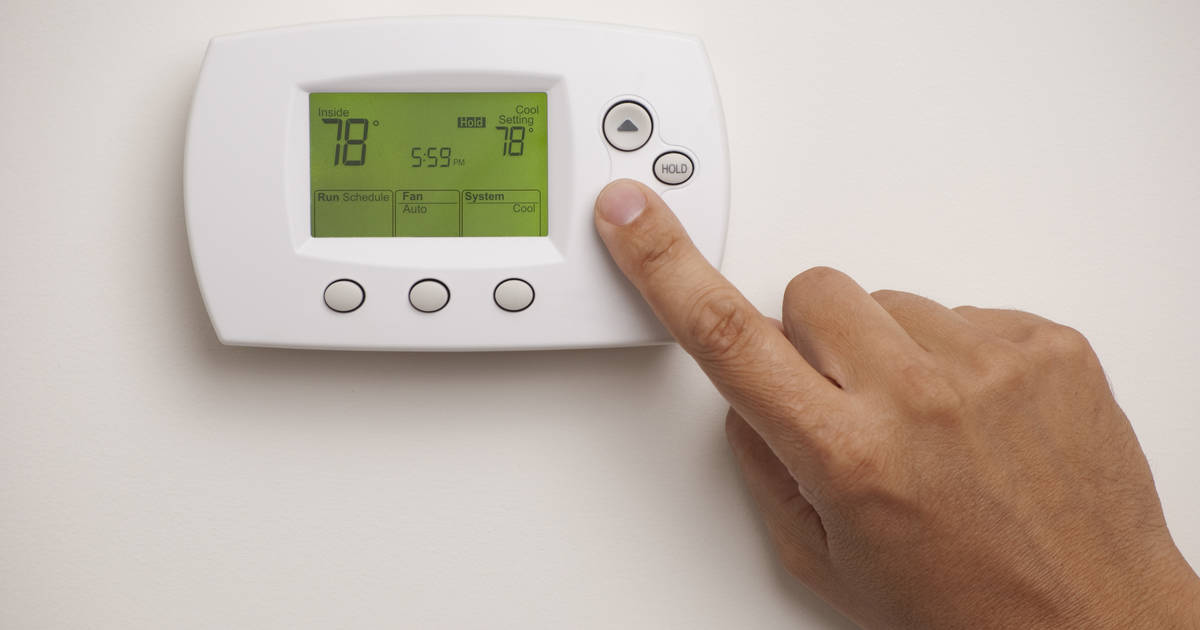Is your home as energy efficient as it could be?
Keeping the warm air in during the winter months and keeping the hot air out during the summer months not only helps you stay comfortable, it keeps your REC electric bill affordable. Not sure where to begin? The tips below will help you identify some ways that you can save energy and cut the cost of your electric bill.
Have a question? Ask our Energy Experts
During the summer:
- Keep your thermostat at 78 degrees or the highest comfortable setting.
- Avoid placing lamps or TVs near your air-conditioning thermostat.
- Have your cooling system serviced annually.
- Check your filters monthly and replace when dirty.
- Don't block your supply or return air vents with furniture or other objects.
- At night, lower the thermostat to cool off the house.
- Check your cooling system's ductwork. Ensure that it is well insulated.
- Close drapes and curtains to keep the sun out during the day.
- Check all windows and doors to be sure they seal tightly when closed.
- Is your home's insulation up to current standard? Is some missing or compressed. There should be about 13" of insulation, or an equivalent of R-38, in attics, R-13 for walls and 6" or R-19 in crawl space floors. Add additional insulation if yours is below standard.
- Run ceiling fans only in occupied rooms.
During colder months:
- Lower your thermostat. REC recommends 68 degrees or lower. If you have a heat pump, adjust your thermostat in I-degree increments to avoid activating the costly auxiliary heat.
- Seal air leaks: Drafts can increase your heating bill by 20 percent.
- Use less hot water: Adjust the temperature setting on your water heater to 120 degrees.
- Limit use of space heaters: Instead, consider small electric blankets.
- Spare fridge or freezer? If not kept full, it should be emptied and unplugged until needed.
Here are some other suggestions for saving energy this winter:
- Use a programmable thermostat.
- Have your heating system serviced annually.
- Check your filters monthly and change when dirty.
- Don't block heat supply or return air vents with furniture or other objects.
- Keep outside heating unit free of debris.
- Ensure ductwork is well insulated.
- Remove window air-conditioning units during winter.
- Make sure your fireplace damper seals tightly and remains closed except when a fire is burning.
- Open drapes and curtains to let the sun in during the day.
- Ensure windows and doors seal tightly when closed.
- Is your home's insulation up to current standard? Is some missing or compressed? There should be about 13" or R-38 in attics, R-15 for walls and 6" or R-19 in crawl space floors.
- Do not run ceiling fans in the winter.
Smart and Programmable Thermostats
Being smart about how you control your temperature settings will help you save money and stay comfortable. Set your thermostat up or down a few degrees (suggested 68 degrees in the winter and 78 degrees in the summer) when you are away from home.
A programmable thermostat will automatically turn on the heating or air conditioning at times you schedule. Programmable thermostats can store multiple daily settings that you can manually override without affecting the rest of the daily or weekly program.Using a programmable thermostat allows flexibility and adds convenience, as temperatures will automatically return to normal before you wake or return home.
A smart thermostat is a Wi-Fi enabled device that automatically adjusts heating and cooling temperature settings for optimal performance. With a smart thermostat, it’s easy to schedule your HVAC to run less while you’re out for the day, so you’ll use less energy. Some common smart thermostat features:
- Learns the temperature you like and establishing a schedule that automatically adjusts to energy-saving temperatures when you are asleep or away.
- Senses when nobody is at home and adjusts the temperature accordingly.
- Allows you to control thermostat remotely through your smartphone or tablet.
The average U.S. household has about 70 light bulbs. One LED (light-emitting diode) light bulb uses up to 850% less energy than old incandescent bulbs and and has the potential to last tens of thousands of hours, so you’ll be buying and changing bulbs less frequently.
The Lighting Facts label helps you buy the light bulbs that are right for you.

The brightness of the bulb is listed first on the label. While you may be used to thinking about brightness in terms of watts, it makes more sense to think in terms of lumens, or the amount of brightness a bulb provides—the higher the number, the brighter the bulb.
Then look at the light appearance or color of the bulb. The scale on the label will tell you whether the bulb is warm or cool.
The numbers shown are on a Kelvin (K) temperature scale.
- • For soft, white, warmer light, look for bulbs marked 2700–3000 K.
- • For a whiter light, look for bulbs marked 3500–4100 K.
- • For bluer white light or daylight, look for bulbs marked 5000–6500 K.
Check air filters at least once a month and change as needed.
REC’s energy advisers recommend using filters with MERV ratings of six to eight. Unless the system was designed for higher MERV ratings, it is recommended that an HVAC professional who is NATE-certified should be used to verify that the air flow does not restrict the performance of the system.
Heating and cooling professionals recommend turning your system off before changing the air filter. Make sure that the arrow on the filter - which indicates the direction of the airflow - is pointing toward the blower motor. Once you’ve made the change, turn your system back on.
Run ceiling fans only when someone is occupying the room. Ceiling fans cool people not rooms. Using a ceiling fan allows you to turn up the thermostat about 4°F without any loss in comfort.
In the winter set the fan to run in the clockwise direction to help push warm air down.
In the summer months set the ceiling fan to run counterclockwise to circulate cool air.
Turn off kitchen, bath and other exhaust fans within 20 minutes after you are done cooking or bathing. When replacing exhaust fans, consider installing high-efficiency, low-noise models.
To keep the meter from spinning, unplug devices that use power even when powered down such as CD or DVD players, cell phone chargers, camera and battery chargers, small appliances, video game consoles computers and TVs.
Consider plugging electronics into a smart strip so you can turn "unplug" many of them at the same time.
Ensure air vents are open. Keep the areas around baseboard heaters, heating and cooling registers, and radiators clear. You can help ensure that there's always sufficient airflow through your HVAC system by keeping your cold air return registers unobstructed by household items like long drapes, area rugs, furniture and children's toys.
Use exhaust fans that vent the outdoors only as needed to limit sending conditioned air outdoors.
Air ducts are one of the most important systems in your home, as they carry the air from your home’s furnace and central air conditioner to each room. If the ducts are poorly sized, poorly sealed, or poorly insulated, they are likely contributing to higher energy bills. You can often address discomfort from heating and cooling by fixing blocked registers, stuck dampers, or disconnected or damaged ducts, or by replacing register grilles that don’t direct the air adequately.
One of the quickest energy- and money-saving tasks you can do is caulk, seal and weatherstrip all seams, cracks, and openings to the outside. Up to 25% of air is lost through small cracks and holes! To identify air leaks, check around your walls, ceilings, windows, doors, lighting and plumbing fixtures, switches and electrical outlets. Look for gaps, improperly applied caulk and weatherstripping, and doors and windows that don’t close tightly.
After you identify all air leaks, do the following:
- Weatherstrip doors and windows.
- Caulk and seal air leaks where plumbing, ducting, or electrical wiring comes through walls, floors, ceilings, and soffits over cabinets.
- Install foam gaskets behind outlet and switch plates on walls.
- Use foam sealant on larger gaps around window trims, baseboards, and other places where air may leak out.
- Wood-burning fireplaces and wood-burning stoves usually have a damper installed. The damper is designed to be shut when the fireplace is not in use and can be easily opened when it is. It's common to forget to close the damper after a fire goes out. This essentially leaves a big hole through which heated or cooled air can escape the house. Be sure to close the damper when not in use to help maintain the temperature in your home.
REC's energy experts can help identify air leaks and insulation needs.
Windows can be one of your home’s most attractive features. Windows provide views, daylight, ventilation and heat from the sun in the winter. Unfortunately, heat moving in and out of your home through windows can increase your heating and air conditioning bills. Energy-efficient windows and measures to reduce heat gain and loss can help save energy and reduce energy bills.
Look for the ENERGY STAR label when buying new windows. Also review ratings from the National Fenestration Rating Council (NFRC). NFRC ratings are included on all ENERGY STAR certified windows and provide a reliable way to determine a window’s energy properties and compare products.
- Close your curtains and shades at night to protect against cold drafts; open them during the day to let in warming sunlight.
- Apply low-e film on the inside of your windows to keep heat from radiating out. Films are rated by the NFRC and will be rated by the Attachments Energy Rating Council (AERC).
- Repair and weatherize your current storm windows, if necessary.
- Install white window shades, drapes, or blinds to reflect heat away from the house. It is always best to install exterior shades whenever possible.
- Close curtains on south- and west-facing windows during the day.
- Install awnings on south- and west-facing windows to create shade.
- Apply sun-control or other reflective films on south-facing windows to reduce solar heat gain.
There are four primary ways to cut your water heating bills: use less hot water; turn down the thermostat on your water heater; insulate your water heater and pipes; or buy a new, more efficient model.
(see REC's Water Heater Replacement Program)
You can take steps to use less hot water and improve the efficiency of your existing water heating system.
- If your hot water tank is warm to the touch, consider insulating it.
- Consider insulating your hot water pipes. Doing so can reduce heat loss, allow you lower the temperature setting.
- Lower the thermostat on your water heater to 120 degrees.
- If you find yourself waiting for the water in your shower to get hot, consider installing a new shower head that has a temperature-sensitive switch that turns off the water when hot. When you step into the shower, you flick a switch on the shower head that restarts the hot water flow.
- Take short showers instead of baths.
- Repair leaky faucets promptly. A leaky faucet wastes gallons of water in a short period of time.
- Wash only full loads of dishes.
- Wash only full loads of clothes in cold water.
- Run your garbage disposal with cold water.

Dishwashers
ENERGY STAR-certified dishwashers use less water and energy when compared to conventional models.In addition, look for the following when buying a dishwasher:
- The EnergyGuide label, to compare models and estimate operating costs.
- The right size for your home. You’ll likely spend less to operate a standard-size model less often than to run a compact model more frequently.
- Options, to allow you to use more efficient cycles when dishes aren’t heavily soiled.
Some additional tips when it comes to energy savings with dishwashers:
- Only run the dishwasher when it is full (not overloaded).
- Let dishes air dry instead of using your dishwasher’s heated dry setting.
- If your dishwasher has an internal heating element that boosts water temperature, set your home’s water heater to 120°F.
Refrigerators
Pay attention to the ENERGY STAR and EnergyGuide labels, to compare models and ensure you are buying an efficient product.
Follow these tips to reduce the amount of energy your refrigerator uses:
- Set the temperature at 35˚–38˚F for refrigerators and 0˚F for standalone freezers.
- Keep the door closed as much as possible.
- Place the refrigerator away from the oven or dishwasher and out of direct sunlight.
- Leave a few inches between the wall and the refrigerator, and keep the condenser coils clean on older models. Check the user’s manual for instructions.
Additional Kitchen Energy Tips:
- Keep range-top burners and reflectors clean; they will reflect the heat better, and you will save energy.
- Cover pots and pans when you cook. You’ll use less energy.
- Match the size of the pan to the heating element.
- Use small appliances such as toaster ovens, electric pressure cookers, microwave ovens, or convection ovens for small meals rather than your large stove or oven.
- Replace light bulbs and light fixtures with ENERGY STAR certified products; kitchen lights are some of the most used in a house.
Laundry
Clothes washers and dryers are some of the largest energy consumers of any home appliances. ENERGY STAR certified clothes washers use less energy, less water, and have greater capacity, allowing you to wash the same amount of laundry in fewer loads.
Follow these tips to reduce your energy use while doing laundry:
- Warm or cold water is generally sufficient to clean your laundry; most of the energy used by clothes washers goes to heating water. Using warm water instead of hot can cut a load’s energy use in half, and using cold water will save even more.
- Try to wash full loads and use an appropriate water setting if you must wash a small load. Use the high-speed or extended spin cycle to remove as much moisture as possible before drying.
- When buying a new clothes dryer, look for the ENERGY STAR label. ENERGY STAR certified clothes dryers use about 20% less energy than conventional models. Many have a moisture sensor that automatically adjusts the amount of heat being used and shuts off the dryer when the load is dry.
Tips to Boost Your Home's Energy Efficiency
Heating and cooling is the largest energy expense for most homes. In fact, it accounts for over 50 percent of energy use. Smart landscaping is an easy, cost-effective and aesthetically pleasing way to lower your home energy costs.

Strategically positioned trees can save up to 25 percent of a household's energy consumption for heating and cooling.

Shading an air conditioning unit can increase its efficiency by up to 10 percent.

On average, a well-designed landscape creates enough energy savings to pay for itself in less than 8 years.
KEY LANDSCAPING CONSIDERATIONS
A well-designed landscape can help protect your home from winter wind and summer sun, and effectively reduce your energy costs year-round. Before you start landscaping, consider your climate, your home's microclimate, as well as the wind directions and shading around your home to help you devise a plan.
WINDBREAKS
A windbreak reduces heating costs by lowering the wind chill around your home. It also creates dead air space that insulates your home in the summer and winter.
Planting Tips
- Plant coniferous trees and shrubs to the north and northwest of your home to stop wind.
- Make the distance between your home and the windbreak about two to five times the height of the mature tree for maximum protection.
- Build a fence or wall, in addition to planting coniferous trees, to deflect the wind over your home.
- Plant low shrubs on the windward side of the windbreak to trap snow before it blows next to your home.
SHADE
Planting trees, bushes or shrubs to shade windows, roofs and air conditioners helps reduce solar heat gain in your home, surrounding air temperatures and overall energy costs.
Planting Tips
- Plant a six- to eight-foot deciduous tree near your home, and it will start shading your windows in the first year.
- Plant trees with crowns lower to the ground on the west side if you want to shade from lower, afternoon sun angles.
- Plant deciduous trees to the south of your home; they can screen 70-90%
of the heat. - Plant bushes, shrubs or climbing vines with a trellis to shade your patio area.
- To cool the air before it reaches your home, plant shrubs and groundcover plants.

CONIFEROUS TREES
and shrubs have leaves year round which provides continuous shade.

DECIDUOUS TREES
block solar heat in the summer and lose their leaves in the fall which lets sunlight in during the winter.





